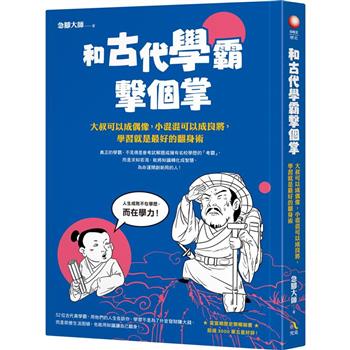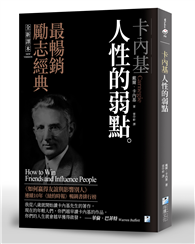首創專業書籍中英文對照書寫模式,搭建世代間溝通橋樑
真實呈現亞洲家族傳承實際困境,具提早防範之警示作用
站在各世代立場審視問題,提升創富者與傳承人間之共識
具體跨境傳承工具與實務操作程序,減少跨世代傳承紛擾
「安致勤資會計師集團」(KEDP CPAs Group)創辦人呂旭明會計師歷經近30年參與跨境家族傳承實務操作,總結累積經驗發現創富者與家族傳承人因語言、文化、成長、學習等背景差異所造成的鴻溝,並非兩三言能道盡。呂會計師多年往來美國、中國、香港與台灣,深知跨境家族財富傳承所面對之實務問題,為了要打破世代間語言和思想的隔閡,本書首創以英文、中文對照之撰寫方式,讓創富家族上下世代間均能理解各自面對的傳承難題。各世代均能從本書中理解家族傳承失敗案例、傳承者面對之困境、傳承籌劃至具體傳承操作工具……等之背後錯綜複雜的成因,進而提前思考財富傳承的全球布局和解決家族成員之間的紛爭。
本書摒棄理論與八股式的教條說明,完全從實務操作面出發,將傳承財富的道路上之籌劃步驟、規劃時間表、籌劃問題、解決方案,與籌劃風險等逐一剖析;讓創富者、傳承者、參與佈局者對於跨境財富傳承籌劃有一明確之參考依據!
| FindBook |
|
有 1 項符合
loren park的圖書 |
 |
$ 780 ~ 900 | 跨境財富傳承與家族信託籌畫實務
作者:呂旭明 / 譯者:MAX LU;LOREN PARK;KEDP專業團隊 出版社:哈佛人 出版日期:2019-02-25 規格:26cm*18.5cm*4.5cm (高/寬/厚) / 初版 / 平裝 / 936頁  共 2 筆 → 查價格、看圖書介紹 共 2 筆 → 查價格、看圖書介紹
|
|
|
圖書介紹 - 資料來源:博客來 評分:
圖書名稱:跨境財富傳承與家族信託籌劃實務
內容簡介
作者介紹
作者簡介
呂旭明(Peter Lu)
安致勤資會計師集團(KEDP CPAs Group)創辦人
呂旭明會計師於台灣國稅局負責個人稅務稽查有五年之經驗,接著於全球四大會計師事務所之一安永會計師事務所(Ernst & Young)工作長達十五年(其中近十年為稅務部合夥人),專責個人及跨境華人投資控股架構與稅務規劃服務。現任安致勤資會計師集團(KEDP CPAs Group)創辦人。
呂會計師近十年來頻繁往來於亞洲(中國、台灣、香港、新加坡等)及美國東西岸,與美國會計師、律師探討最新美國海外所得稅務申報與美國海外金融帳戶與財產揭露規定,更深入瞭解美國海歸華人對美國稅務訊息需求及亞洲赴美新移民應注意之美國稅務問題。從這些稅務問題中更了解到長年移居海外的華人當中不少人除了稅務問題,更迫切需要專業人士為其長遠規劃未來該如何傳承財富。
呂會計師總結近30年來參與跨境家族傳承實務操作的經驗,發現創富者與家族傳承人因語言、文化、成長、學習等背景差異所造成的鴻溝,並非兩三言能道盡。為了要深入剖析跨境家族財富傳承所面對之實務問題並打破世代間語言和思想的隔閡,呂會計師首創以英文、中文對照之撰寫方式,讓創富家族上下世代間均能理解各自面對的傳承難題。各世代均能從本書中理解家族傳承失敗案例、傳承者面對之困境、傳承籌劃至具體傳承操作工具……等之背後錯綜複雜的成因,進而提前思考財富傳承的全球布局和解決家族成員之間的紛爭。
呂旭明(Peter Lu)
安致勤資會計師集團(KEDP CPAs Group)創辦人
呂旭明會計師於台灣國稅局負責個人稅務稽查有五年之經驗,接著於全球四大會計師事務所之一安永會計師事務所(Ernst & Young)工作長達十五年(其中近十年為稅務部合夥人),專責個人及跨境華人投資控股架構與稅務規劃服務。現任安致勤資會計師集團(KEDP CPAs Group)創辦人。
呂會計師近十年來頻繁往來於亞洲(中國、台灣、香港、新加坡等)及美國東西岸,與美國會計師、律師探討最新美國海外所得稅務申報與美國海外金融帳戶與財產揭露規定,更深入瞭解美國海歸華人對美國稅務訊息需求及亞洲赴美新移民應注意之美國稅務問題。從這些稅務問題中更了解到長年移居海外的華人當中不少人除了稅務問題,更迫切需要專業人士為其長遠規劃未來該如何傳承財富。
呂會計師總結近30年來參與跨境家族傳承實務操作的經驗,發現創富者與家族傳承人因語言、文化、成長、學習等背景差異所造成的鴻溝,並非兩三言能道盡。為了要深入剖析跨境家族財富傳承所面對之實務問題並打破世代間語言和思想的隔閡,呂會計師首創以英文、中文對照之撰寫方式,讓創富家族上下世代間均能理解各自面對的傳承難題。各世代均能從本書中理解家族傳承失敗案例、傳承者面對之困境、傳承籌劃至具體傳承操作工具……等之背後錯綜複雜的成因,進而提前思考財富傳承的全球布局和解決家族成員之間的紛爭。
目錄
第一章 跨境財富傳承案例分析
一、父母與子女爭議案例
二、手足、兄弟姊妹爭議案例
三、婚姻爭議案例
四、個人與政府爭議案例
五、名義人/人頭爭議案例
六、個人理財不慎爭議案例
七、行善爭議案例
第二章 跨境財產傳承實操程序
一、中國地區財產傳承程序與稅費
二、台灣地區財產傳承程序與稅費
三、香港地區財產傳承程序與稅費
四、新加坡地區財產傳承程序與稅費
五、日本地區財產傳承程序與稅費
六、美國地區財產傳承程序與稅費
第三章 跨境信託籌畫與實操
一、跨境財富傳承所面對問題
(一)財產性質的複雜化
(二)財產持有名義不一
(三)財產座落地點多處,財產管理複雜化
(四)財產取得與持有法令的限制
(五)銀行帳戶開立與維持困難
(六)外匯及資金流動管制法令的變化
(七)家族成員的變化
(八)財產擁有人傳承的猶豫
(九)少子傳承風險
二、跨境財富傳承應考量事項
(一)跨境資產配置與管理
(二)跨境家族企業的抉擇
(三)跨境世代交替團隊培養
(四)跨境稅務籌畫與年度申報
(五)跨境資產的繼承和分配
(六)跨境後代教育
(七)跨境家族凝聚力與關係維持
(八)跨境家族個人事務支援
(九)跨境慈善基金或公益信託
(十)健康銀行的傳承
三、跨境財富傳承的籌畫
跨境財富傳承執行步驟
(一)家族憲法的制定
(二)家族辦公室
第四章 信託意義與類別及離岸信託實務
一、信託制度的形成
(一)英國信託制度的形成
(二)美國信託制度的形成
(三)日本信託制度的形成
(四)新加玻信託制度的形成
(五)台灣信託制度的形成
(六)中國信託制度的形成
二、信託意義
三、信託種類
(一)以家族治理傳承為目的的信託種類
(二)特殊投資目的信託種類
四、信託架構
五、信託目的
六、美國主要信託分類
(一)依「信託可撤銷與否」分類
(二)以「美國課稅主體與信託關係」劃分
附16種類型信託
(三)以「信託設立的時間點」劃分
(四)以「信託成立的功能或目的」進行劃分
(五)以「信託存在時間」進行劃分
七、離岸信託
(一)何謂「離岸信託」?
(二)成立離岸信託的目的
(三)離岸信託的優缺點
(四)離岸信託的問題與考量
(五)離岸信託的設立架構
(六)離岸信託設立程序(以新加坡信託成立為例)
(七)離岸信託成立與後續維持
第五章 美國信託實務
一、生前信託
二、不可撤銷保險信託
三、美國可撤銷朝代信託
(一)非美籍人士(非美國稅務居民)設立美國可撤銷朝代信託
(二)非美籍人士設立可撤銷朝代信託持有境外資產
四、美國不可撤銷朝代信託
五、在美國成立的境外信託
(一)美國所得稅
(二)信息披露要求
附錄
一、辦理台灣地區遺產繼承相關表格
二、遺囑範本
三、加州遺囑認證程序需填表格範本
四、家族憲法範本
五、銀行信託合約範本
六、新加坡信託合約範例
七、維京群島私人受託公司範例
八、CRS 參考表格
九、離岸信託設立人過世美籍受益人取得收益應申報美國稅與披露彙總表
十、生存信託合約範本
十一、不可撤銷保險信託合約範本
十二、受託公司問卷
十三、可撤銷信託合約範本
十四、不可撤銷信託合約範本
十五、美國遺產及信託之所得申報表
一、父母與子女爭議案例
二、手足、兄弟姊妹爭議案例
三、婚姻爭議案例
四、個人與政府爭議案例
五、名義人/人頭爭議案例
六、個人理財不慎爭議案例
七、行善爭議案例
第二章 跨境財產傳承實操程序
一、中國地區財產傳承程序與稅費
二、台灣地區財產傳承程序與稅費
三、香港地區財產傳承程序與稅費
四、新加坡地區財產傳承程序與稅費
五、日本地區財產傳承程序與稅費
六、美國地區財產傳承程序與稅費
第三章 跨境信託籌畫與實操
一、跨境財富傳承所面對問題
(一)財產性質的複雜化
(二)財產持有名義不一
(三)財產座落地點多處,財產管理複雜化
(四)財產取得與持有法令的限制
(五)銀行帳戶開立與維持困難
(六)外匯及資金流動管制法令的變化
(七)家族成員的變化
(八)財產擁有人傳承的猶豫
(九)少子傳承風險
二、跨境財富傳承應考量事項
(一)跨境資產配置與管理
(二)跨境家族企業的抉擇
(三)跨境世代交替團隊培養
(四)跨境稅務籌畫與年度申報
(五)跨境資產的繼承和分配
(六)跨境後代教育
(七)跨境家族凝聚力與關係維持
(八)跨境家族個人事務支援
(九)跨境慈善基金或公益信託
(十)健康銀行的傳承
三、跨境財富傳承的籌畫
跨境財富傳承執行步驟
(一)家族憲法的制定
(二)家族辦公室
第四章 信託意義與類別及離岸信託實務
一、信託制度的形成
(一)英國信託制度的形成
(二)美國信託制度的形成
(三)日本信託制度的形成
(四)新加玻信託制度的形成
(五)台灣信託制度的形成
(六)中國信託制度的形成
二、信託意義
三、信託種類
(一)以家族治理傳承為目的的信託種類
(二)特殊投資目的信託種類
四、信託架構
五、信託目的
六、美國主要信託分類
(一)依「信託可撤銷與否」分類
(二)以「美國課稅主體與信託關係」劃分
附16種類型信託
(三)以「信託設立的時間點」劃分
(四)以「信託成立的功能或目的」進行劃分
(五)以「信託存在時間」進行劃分
七、離岸信託
(一)何謂「離岸信託」?
(二)成立離岸信託的目的
(三)離岸信託的優缺點
(四)離岸信託的問題與考量
(五)離岸信託的設立架構
(六)離岸信託設立程序(以新加坡信託成立為例)
(七)離岸信託成立與後續維持
第五章 美國信託實務
一、生前信託
二、不可撤銷保險信託
三、美國可撤銷朝代信託
(一)非美籍人士(非美國稅務居民)設立美國可撤銷朝代信託
(二)非美籍人士設立可撤銷朝代信託持有境外資產
四、美國不可撤銷朝代信託
五、在美國成立的境外信託
(一)美國所得稅
(二)信息披露要求
附錄
一、辦理台灣地區遺產繼承相關表格
二、遺囑範本
三、加州遺囑認證程序需填表格範本
四、家族憲法範本
五、銀行信託合約範本
六、新加坡信託合約範例
七、維京群島私人受託公司範例
八、CRS 參考表格
九、離岸信託設立人過世美籍受益人取得收益應申報美國稅與披露彙總表
十、生存信託合約範本
十一、不可撤銷保險信託合約範本
十二、受託公司問卷
十三、可撤銷信託合約範本
十四、不可撤銷信託合約範本
十五、美國遺產及信託之所得申報表
序
自序
擁有財富及繼承人,卻解決不了跨世代的財富傳承紛爭
亞洲移民現今已經遍佈全球,移民國家莫屬美國移民人數最眾。在這些亞裔家族在美落地生根,家族規模開枝散葉越來越茁壯之際,家族所創造之財富型態也越形複雜,傳承給後代也絕非僅循以往之模式就能解決。過去三十年間,本人實際參與過許多亞洲高財富個人傳承案件,觀察到他們的財富傳承的方式非常一致——第一代努力工作並獲得豐富的經驗,期望後代能夠過著富裕的日子;然而,財富的經驗法則往往是,它很難從第一代順利地轉移到第一代。對第二代來說,財富雖然形成了助力,但是在接棒過程中可能處處充滿危機,而危機常源自於上下代對於財富抱持的看法並非一致。
上下代對於財富的看法源自不同的思維模式,如此便造成不同世代之間的衝突——來自亞洲的第一代,通常保有根深蒂固的傳統價值觀;第二代若非土生土長在美國,則是為了求學或開拓視野而赴歐美求學,受到崇尚個人的自由風氣的薰陶。如此的差異當然造成了價值觀和想法之間的極大落差。此外,第一代創富者的行事風格和個性理念通常主導了企業經營和家族傳承的方向,他們這代多是白手起家,經過重重的嚴苛考驗、付出許多心力再加上些許的運氣,才創造出今日的財富。也因為如此,他們挾著個人叱咤事業場的豐富經驗和主觀意識及價值判斷,經常是以權威之姿來主導整個傳承大局。多年內化的主觀意識使得他們難以向第二代解釋其思維脈絡,而第二代更難以揣測上一代的心意。
長此以往,兩代之間對於經營企業、財富管理及家族傳承的溝通無法完善,許多有利於創造家族財富的機會就此喪失,更多無形的家族價值也會在無效的溝通中逐漸消失。許多案例是一直等到家族裡有重大變故,例如第一代的健康亮起紅燈,或是企業經營發生危機,兩代至此才談及交接議題,否則第二代常是無法理解和掌握上一代的想法及其對企業經營的規劃,如此情況無益於上下代之間的經營傳承。
除了思維模式導致溝通不良之外,另一個不利於財富傳承的導因是上下代對於家族企業的經營產生的歧見。第一代苦心栽培第二代,期望他們能夠繼承自己辛苦積纂下來的企業江山,但第二代往往不積極無意甚或無意涉入家族企業,想當然耳,最終必定導致家族激烈的衝突。本人在執業過程中也常充當和事佬,觀察並體悟到如果第二代在享受優渥生活的同時能共同分擔經營責任,去了解家族企業的運作並投身管理行列,必定能夠避免和上一代的紛爭。
再者是「富不過三代」的案例屢見不鮮。就亞洲傳統文化來說,大部分高財富個人一輩子的努力就是為了下一代,但現實往往是第一代創造累積、第二代守成維持、第三代則是敗光一切。第一代辛苦累積創造財富,但不肯也無意願過著豪奢生活,粗茶淡飯的日子甘之如飴;但是第二代或第三代因從未參與過第一代辛苦的累積財富過程,自己過著錦衣玉食的日子,只想著將家族財產變現好繼續過著安逸生活,如此的揮霍度日恐怕是第一代預料不到的。
本人在過去三十年間處理了許多面臨類似難題的家庭紛爭,除了上下代產生對立的狀況之外,也發現有為數不少的第一代抗拒交接給下一代,當中的一個原因竟源於跨國稅務的申報。許多有著雙重國籍或是美國稅務身份的第一代,抱持著美國國稅局不可能找上的固執想法,因而不申報美國稅、不批露海外金融帳戶,任憑第二代如何勸說都始終冥頑不靈。本人對於這些不願多繳稅的高資產人士來說,常常花上許多心力來導正他們的觀念,最終合法申報美國稅並確實收到降低稅負的效果。反觀居住在美國的第二代,他們雖然繼承了上一代的財富,卻面臨申報美國稅和揭露海外資產的情況。他們的稅務難題有二:一是他們應繳美國稅卻未盡繳稅之義務;二是上一代未妥善作規劃財富傳承所引發的種種問題讓第二代無可奈何。
究竟這些高資產人士為何不及早規劃財富傳承的各個階段?深究其原因,還是創富者的「不作為」所致。當中許多第一代開始得太晚或是根本沒時間去策劃,甚或有些人認為自己的大限之日還太遙遠,現階段根本不需要考慮傳承之事。因此這些「不作為」就在十年、二十年過後,這些富人的上市股權、家族控股、骨董字畫、翡翠鑽石等的財富,還是在原地打轉、未見有積極的傳承規劃。
財富傳承是個大學問,如何將成功傳給下一代,在今日已成為亞洲創富家不得不面對的問題。尤其當主要財產在亞洲,但繼承人長年居住在海外時,這個挑戰性更大,常常容易導致資產管理不善。很多情況是,第二代繼承人因為不懂亞洲文化和法令限制,因而造成他們在繼承財產時許多負擔和資源上的浪費。
最後,財富傳承者也應了解美國和亞洲對於財富傳承抱持的觀念差異,才更能理解下一代對於接管財富的想法。在美國來說,富人傾向建立大型的慈善機構來進行財富捐贈以幫助弱勢族群;反觀在亞洲,富人多是儲蓄財富傳承給下一代,不似美國富人會挹注許多資金給非營利組織。
此種差異來自於西方富人對社會抱持著關懷的心,他們期望能夠對人類社會貢獻一己之力。也因此,從小就生長在美國的富二代或富三代承接的是西方對於財富的價值觀,他們傾向追求自我的人生目標,抱著未來將家族財富捐贈給非營利組織的心態,而非自己投入家族企業的經營。但這樣的想法常常引發了與上一代和其他家族成員之間的衝突。長久下來,家 族成員對於財富處理的態度不一,最終引發嚴重的家庭衝突。
就本人從處理的案件中歸納出,財富傳承莫過於圍繞在傳承成本、傳承糾紛、傳承債務與傳承管理等四大問題;首先,傳承成本指的是財富轉移程序中的難度與稅費;傳承糾紛則是財富轉移過程中可能引發的種種問題;債務糾紛亦是財富傳承的致命傷,往往事業和投資越大、未來糾紛就越多;最後是傳承管理,意即上下代之間對於經營企業的共識不一,因此更需要有效的管理工具(例如信託等)加上專業經理人來解決此一問題。這些財富傳承的四大問題不論是財富第一代、第二代,甚或是第三代都需要共同面對。
本書於第三、四、五章中將提及家族財產傳承與信託,包括離岸信託與美國信託,家族可撤銷與不可撤銷信託架構、信託合約架構、如何將跨境資產國際化並移入家族信託等,均有詳盡的分析及介紹。期望以本書搭建起財富家族上下代之間的橋樑,將財富進行妥善的規劃,長長久久的傳承下去。
For the past 30 years, wealth has been passed from one generation to the other. The trend is quite clear. With the first generation, they tend to work very hard and garner much experience. They want the best for their posterity. The rule of thumb with wealth, however, is that it has a hard time transferring from one generation to the other. This can be seen through many empirical examples.
Money is helpful, but dangerous for the second generation. The first generation, if they do things right and proceed in the correct manner, will be able to leave their legacy. Estate Planning by US Trust will outline the manner in which to achieve this.
When things do not proceed in the correct manner, they can turn into a bad transition. This could include employee fights, family feuds, and a waste of resources.
Estate Planning by US Trust, through case studies, will show instances of successful and not so successful transfers of wealth within families. These cases will also show readers what founders could have done, or if they had taken the time and effort, what they should have done. The second generation can use these examples to make a better framework to transition. By looking at the first generation, the subsequent generations are able to garner the mindset of power.
Often, there is a conflict with successive generations due to differing mindsets. An explanation for this is that the first generation is from Asia, hence, they have Asian values. The second generation tends to be from America. This creates a rift between the different cultures and mindsets. This creates a loss of opportunities when communication is not efficient and things get lost in translation.
In the author’s perspective, the second generation tends to ignore or does not want to deal with the business that their families are part of. This eventually leads to familial conflict. The second generation may be very well off, but despite this, it is their responsibility to understand the business and manage it.
The first generation is going to have an odd dynamic. This paragraph explores odd characteristics of leaders and households. The first generation has had to go through strict tests and excelled. They also had strokes of luck that benefited them. Compared to the second generation, the first may be more liable to subjective opinions from experience. This mindset is often quite difficult to explain to the second generation. Unless there is a major accident, be it a blight to health or something detrimental to a business, the matter of transition is not spoken about in a household. As a result, oftentimes, the second generation may not know about or fully understand the first generation’s agenda.
Over 30 years, the author has dealt with families who deal with these conundrums. The author also finds that his clients, first generation wealthy households, tend to have some sort of resistance to the process. One issue that comes up time and time again is that since families tend to spread around the world, they might not report all their taxes to each of their respective countries. Since people do not want to pay more taxes, the author has deep faith that he can help people who are in this situation.
The second generation, understandably, worries because they live in the States and they would have to deal with taxes. There are two issues that arise from this situation—the first issue is that CPAs warn these generations to pay their taxes, but they do not. The second issue is that the first generation wants to enjoy the money that they have made and do not care about inheritances. They end up splurging their money. This reckless spending ends up worrying the second generation and they do not know how to manage the situation.
Sometimes, even if the first generation wants to plan a transition, they often start too late, have no time, or even think that they will not die anytime soon.
The first generation had assets, public stocks, gold, jewelry and the like. This generation does not know or does not care about what happens to their assets after their death. The second generation, however, may what to know what to do with the assets because they might have to deal with different taxes or other complications.
In traditional Asian households, typically, it is the first generation that makes money. The second generation tends to keep that money within the family, but the third generation has a tendency to lose the money that was made in the first generation. Looking at the overall trend of the different generations, the first generation makes money and is adept at retaining it because they are saving, frugal people. The first generation spends very little, whereas the third generation typically just wants to cash out. These people tend to splurge on sports cars, jets, yachts and items that are overly opulent and excessive.
The key question that the author would like to pose to the first generation is if they really want to see this happen to the third generation?
The process of wealth transition is not an easy one. This extremely difficult art is important for families to take on and know that this is a critical challenge for them. This problem is further promulgated by the fact that second and third generations tend to not live in Asia, but their assets are in Asia. This leads to mismanagement of their assets. Furthermore, the second and third generation does not or has a difficult time understanding the culture, laws, and regulations of Asia.
The definition of wealthy is different in Asia and America. If one is wealthy in America, the western ideal is that these people donate and build large organizations to help those who are in need. On the other hand, in Asia, the family structure tends to save and give to the next generation. They do not invest too much in nonprofit organizations. A reason for this disparity may be because, in the west, the wealthiest care about society, the furthering of society and what they can do to help that agenda.
The second and third generations typically have westernized values, so they might end up donating to nonprofits. This can lead to confrontation and conflict with other family members who do not share the same mindset. Over one or two decades, conflict in the family will brew and this leads to generations not being able to effectively communicate with each other. The first generation’s first priority is to give to the second generation. They only want to give once they have a mass excess and the welfare of their posterity is secured. Once this is achieved, they want to then donate and leave a lasting impact, but they do not necessarily know how to do so.
There are four big questions to wealth transition. The first question is what is the cost of transition from generation to generation? The second question is what are the possible conflicts that can arise from transition? The third question is what to do about debt? Companies may rely on credit to function, so what to do about the debt that they have incurred? The fourth and final question is what to do if the second generation is unable to transition? Estate Planning by US Trust aims at building an effective communication channel between generations of wealthy families to solve those issues arising from the inheritance process.
擁有財富及繼承人,卻解決不了跨世代的財富傳承紛爭
亞洲移民現今已經遍佈全球,移民國家莫屬美國移民人數最眾。在這些亞裔家族在美落地生根,家族規模開枝散葉越來越茁壯之際,家族所創造之財富型態也越形複雜,傳承給後代也絕非僅循以往之模式就能解決。過去三十年間,本人實際參與過許多亞洲高財富個人傳承案件,觀察到他們的財富傳承的方式非常一致——第一代努力工作並獲得豐富的經驗,期望後代能夠過著富裕的日子;然而,財富的經驗法則往往是,它很難從第一代順利地轉移到第一代。對第二代來說,財富雖然形成了助力,但是在接棒過程中可能處處充滿危機,而危機常源自於上下代對於財富抱持的看法並非一致。
上下代對於財富的看法源自不同的思維模式,如此便造成不同世代之間的衝突——來自亞洲的第一代,通常保有根深蒂固的傳統價值觀;第二代若非土生土長在美國,則是為了求學或開拓視野而赴歐美求學,受到崇尚個人的自由風氣的薰陶。如此的差異當然造成了價值觀和想法之間的極大落差。此外,第一代創富者的行事風格和個性理念通常主導了企業經營和家族傳承的方向,他們這代多是白手起家,經過重重的嚴苛考驗、付出許多心力再加上些許的運氣,才創造出今日的財富。也因為如此,他們挾著個人叱咤事業場的豐富經驗和主觀意識及價值判斷,經常是以權威之姿來主導整個傳承大局。多年內化的主觀意識使得他們難以向第二代解釋其思維脈絡,而第二代更難以揣測上一代的心意。
長此以往,兩代之間對於經營企業、財富管理及家族傳承的溝通無法完善,許多有利於創造家族財富的機會就此喪失,更多無形的家族價值也會在無效的溝通中逐漸消失。許多案例是一直等到家族裡有重大變故,例如第一代的健康亮起紅燈,或是企業經營發生危機,兩代至此才談及交接議題,否則第二代常是無法理解和掌握上一代的想法及其對企業經營的規劃,如此情況無益於上下代之間的經營傳承。
除了思維模式導致溝通不良之外,另一個不利於財富傳承的導因是上下代對於家族企業的經營產生的歧見。第一代苦心栽培第二代,期望他們能夠繼承自己辛苦積纂下來的企業江山,但第二代往往不積極無意甚或無意涉入家族企業,想當然耳,最終必定導致家族激烈的衝突。本人在執業過程中也常充當和事佬,觀察並體悟到如果第二代在享受優渥生活的同時能共同分擔經營責任,去了解家族企業的運作並投身管理行列,必定能夠避免和上一代的紛爭。
再者是「富不過三代」的案例屢見不鮮。就亞洲傳統文化來說,大部分高財富個人一輩子的努力就是為了下一代,但現實往往是第一代創造累積、第二代守成維持、第三代則是敗光一切。第一代辛苦累積創造財富,但不肯也無意願過著豪奢生活,粗茶淡飯的日子甘之如飴;但是第二代或第三代因從未參與過第一代辛苦的累積財富過程,自己過著錦衣玉食的日子,只想著將家族財產變現好繼續過著安逸生活,如此的揮霍度日恐怕是第一代預料不到的。
本人在過去三十年間處理了許多面臨類似難題的家庭紛爭,除了上下代產生對立的狀況之外,也發現有為數不少的第一代抗拒交接給下一代,當中的一個原因竟源於跨國稅務的申報。許多有著雙重國籍或是美國稅務身份的第一代,抱持著美國國稅局不可能找上的固執想法,因而不申報美國稅、不批露海外金融帳戶,任憑第二代如何勸說都始終冥頑不靈。本人對於這些不願多繳稅的高資產人士來說,常常花上許多心力來導正他們的觀念,最終合法申報美國稅並確實收到降低稅負的效果。反觀居住在美國的第二代,他們雖然繼承了上一代的財富,卻面臨申報美國稅和揭露海外資產的情況。他們的稅務難題有二:一是他們應繳美國稅卻未盡繳稅之義務;二是上一代未妥善作規劃財富傳承所引發的種種問題讓第二代無可奈何。
究竟這些高資產人士為何不及早規劃財富傳承的各個階段?深究其原因,還是創富者的「不作為」所致。當中許多第一代開始得太晚或是根本沒時間去策劃,甚或有些人認為自己的大限之日還太遙遠,現階段根本不需要考慮傳承之事。因此這些「不作為」就在十年、二十年過後,這些富人的上市股權、家族控股、骨董字畫、翡翠鑽石等的財富,還是在原地打轉、未見有積極的傳承規劃。
財富傳承是個大學問,如何將成功傳給下一代,在今日已成為亞洲創富家不得不面對的問題。尤其當主要財產在亞洲,但繼承人長年居住在海外時,這個挑戰性更大,常常容易導致資產管理不善。很多情況是,第二代繼承人因為不懂亞洲文化和法令限制,因而造成他們在繼承財產時許多負擔和資源上的浪費。
最後,財富傳承者也應了解美國和亞洲對於財富傳承抱持的觀念差異,才更能理解下一代對於接管財富的想法。在美國來說,富人傾向建立大型的慈善機構來進行財富捐贈以幫助弱勢族群;反觀在亞洲,富人多是儲蓄財富傳承給下一代,不似美國富人會挹注許多資金給非營利組織。
此種差異來自於西方富人對社會抱持著關懷的心,他們期望能夠對人類社會貢獻一己之力。也因此,從小就生長在美國的富二代或富三代承接的是西方對於財富的價值觀,他們傾向追求自我的人生目標,抱著未來將家族財富捐贈給非營利組織的心態,而非自己投入家族企業的經營。但這樣的想法常常引發了與上一代和其他家族成員之間的衝突。長久下來,家 族成員對於財富處理的態度不一,最終引發嚴重的家庭衝突。
就本人從處理的案件中歸納出,財富傳承莫過於圍繞在傳承成本、傳承糾紛、傳承債務與傳承管理等四大問題;首先,傳承成本指的是財富轉移程序中的難度與稅費;傳承糾紛則是財富轉移過程中可能引發的種種問題;債務糾紛亦是財富傳承的致命傷,往往事業和投資越大、未來糾紛就越多;最後是傳承管理,意即上下代之間對於經營企業的共識不一,因此更需要有效的管理工具(例如信託等)加上專業經理人來解決此一問題。這些財富傳承的四大問題不論是財富第一代、第二代,甚或是第三代都需要共同面對。
本書於第三、四、五章中將提及家族財產傳承與信託,包括離岸信託與美國信託,家族可撤銷與不可撤銷信託架構、信託合約架構、如何將跨境資產國際化並移入家族信託等,均有詳盡的分析及介紹。期望以本書搭建起財富家族上下代之間的橋樑,將財富進行妥善的規劃,長長久久的傳承下去。
For the past 30 years, wealth has been passed from one generation to the other. The trend is quite clear. With the first generation, they tend to work very hard and garner much experience. They want the best for their posterity. The rule of thumb with wealth, however, is that it has a hard time transferring from one generation to the other. This can be seen through many empirical examples.
Money is helpful, but dangerous for the second generation. The first generation, if they do things right and proceed in the correct manner, will be able to leave their legacy. Estate Planning by US Trust will outline the manner in which to achieve this.
When things do not proceed in the correct manner, they can turn into a bad transition. This could include employee fights, family feuds, and a waste of resources.
Estate Planning by US Trust, through case studies, will show instances of successful and not so successful transfers of wealth within families. These cases will also show readers what founders could have done, or if they had taken the time and effort, what they should have done. The second generation can use these examples to make a better framework to transition. By looking at the first generation, the subsequent generations are able to garner the mindset of power.
Often, there is a conflict with successive generations due to differing mindsets. An explanation for this is that the first generation is from Asia, hence, they have Asian values. The second generation tends to be from America. This creates a rift between the different cultures and mindsets. This creates a loss of opportunities when communication is not efficient and things get lost in translation.
In the author’s perspective, the second generation tends to ignore or does not want to deal with the business that their families are part of. This eventually leads to familial conflict. The second generation may be very well off, but despite this, it is their responsibility to understand the business and manage it.
The first generation is going to have an odd dynamic. This paragraph explores odd characteristics of leaders and households. The first generation has had to go through strict tests and excelled. They also had strokes of luck that benefited them. Compared to the second generation, the first may be more liable to subjective opinions from experience. This mindset is often quite difficult to explain to the second generation. Unless there is a major accident, be it a blight to health or something detrimental to a business, the matter of transition is not spoken about in a household. As a result, oftentimes, the second generation may not know about or fully understand the first generation’s agenda.
Over 30 years, the author has dealt with families who deal with these conundrums. The author also finds that his clients, first generation wealthy households, tend to have some sort of resistance to the process. One issue that comes up time and time again is that since families tend to spread around the world, they might not report all their taxes to each of their respective countries. Since people do not want to pay more taxes, the author has deep faith that he can help people who are in this situation.
The second generation, understandably, worries because they live in the States and they would have to deal with taxes. There are two issues that arise from this situation—the first issue is that CPAs warn these generations to pay their taxes, but they do not. The second issue is that the first generation wants to enjoy the money that they have made and do not care about inheritances. They end up splurging their money. This reckless spending ends up worrying the second generation and they do not know how to manage the situation.
Sometimes, even if the first generation wants to plan a transition, they often start too late, have no time, or even think that they will not die anytime soon.
The first generation had assets, public stocks, gold, jewelry and the like. This generation does not know or does not care about what happens to their assets after their death. The second generation, however, may what to know what to do with the assets because they might have to deal with different taxes or other complications.
In traditional Asian households, typically, it is the first generation that makes money. The second generation tends to keep that money within the family, but the third generation has a tendency to lose the money that was made in the first generation. Looking at the overall trend of the different generations, the first generation makes money and is adept at retaining it because they are saving, frugal people. The first generation spends very little, whereas the third generation typically just wants to cash out. These people tend to splurge on sports cars, jets, yachts and items that are overly opulent and excessive.
The key question that the author would like to pose to the first generation is if they really want to see this happen to the third generation?
The process of wealth transition is not an easy one. This extremely difficult art is important for families to take on and know that this is a critical challenge for them. This problem is further promulgated by the fact that second and third generations tend to not live in Asia, but their assets are in Asia. This leads to mismanagement of their assets. Furthermore, the second and third generation does not or has a difficult time understanding the culture, laws, and regulations of Asia.
The definition of wealthy is different in Asia and America. If one is wealthy in America, the western ideal is that these people donate and build large organizations to help those who are in need. On the other hand, in Asia, the family structure tends to save and give to the next generation. They do not invest too much in nonprofit organizations. A reason for this disparity may be because, in the west, the wealthiest care about society, the furthering of society and what they can do to help that agenda.
The second and third generations typically have westernized values, so they might end up donating to nonprofits. This can lead to confrontation and conflict with other family members who do not share the same mindset. Over one or two decades, conflict in the family will brew and this leads to generations not being able to effectively communicate with each other. The first generation’s first priority is to give to the second generation. They only want to give once they have a mass excess and the welfare of their posterity is secured. Once this is achieved, they want to then donate and leave a lasting impact, but they do not necessarily know how to do so.
There are four big questions to wealth transition. The first question is what is the cost of transition from generation to generation? The second question is what are the possible conflicts that can arise from transition? The third question is what to do about debt? Companies may rely on credit to function, so what to do about the debt that they have incurred? The fourth and final question is what to do if the second generation is unable to transition? Estate Planning by US Trust aims at building an effective communication channel between generations of wealthy families to solve those issues arising from the inheritance process.
|









